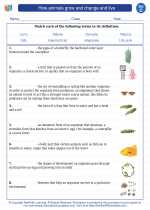Rivers
A river is a natural flowing watercourse, usually freshwater, flowing towards an ocean, sea, lake or another river. It plays a crucial role in the Earth's ecosystem, shaping the landscape, providing habitats for various species, and serving as a source of water for human activities.
Formation of Rivers
Rivers are formed through the process of erosion and deposition. Water from precipitation, such as rain or snow, collects in a watershed or drainage basin, and flows downhill due to gravity. As the water travels, it erodes the land, forming a river channel and carrying sediment downstream. Over time, the river may meander, creating bends and curves in its path.
Features of Rivers
Rivers have several distinct features, including the source (where the river begins), the mouth (where it flows into another body of water), tributaries (smaller streams that flow into the main river), and a variety of landforms created by the river's erosional and depositional activities, such as waterfalls, rapids, and floodplains.
Importance of Rivers
Rivers are vital to both natural ecosystems and human societies. They support a diverse range of plant and animal life, and provide essential resources for human activities such as agriculture, transportation, and energy production. Additionally, rivers contribute to the water cycle by replenishing groundwater and influencing local climates.
Human Impact on Rivers
Unfortunately, human activities such as pollution, dam construction, and deforestation can have detrimental effects on river ecosystems. It is important to understand and address these issues to ensure the health and sustainability of our rivers.
Study Guide
Here are some key points to remember when studying rivers:
- Describe the process of river formation and the factors that influence the flow of a river.
- Identify and explain the various features of rivers, including their sources, tributaries, and landforms.
- Discuss the ecological importance of rivers and the ways in which they support natural habitats.
- Examine the impact of human activities on river ecosystems and propose potential solutions to mitigate these effects.
Understanding the role of rivers in the environment and in human society is essential for appreciating their significance and promoting their conservation.
[Rivers] Related Worksheets and Study Guides:
.◂Science Worksheets and Study Guides Third Grade. How animals grow and change and live

 Worksheet/Answer key
Worksheet/Answer key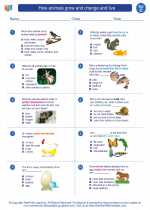
 Worksheet/Answer key
Worksheet/Answer key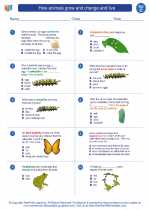
 Worksheet/Answer key
Worksheet/Answer key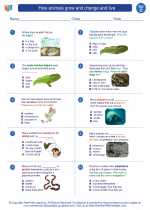
 Worksheet/Answer key
Worksheet/Answer key
 Vocabulary/Answer key
Vocabulary/Answer key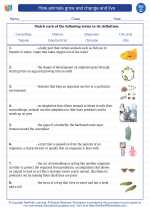
 Vocabulary/Answer key
Vocabulary/Answer key